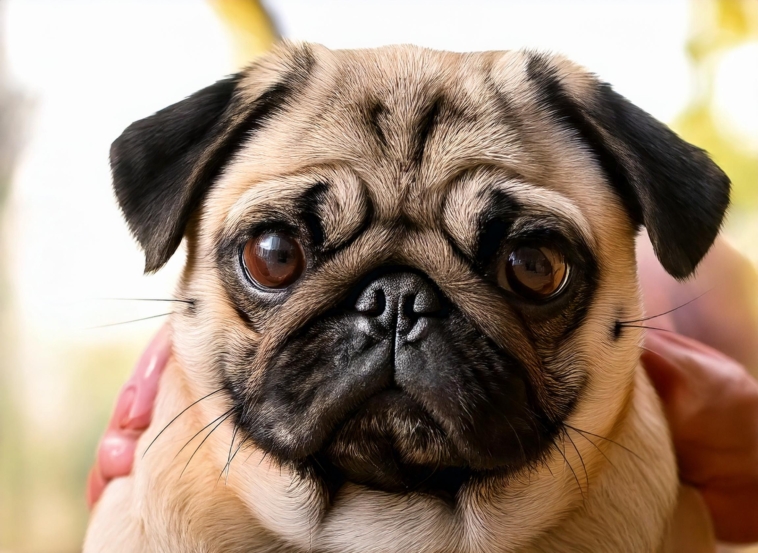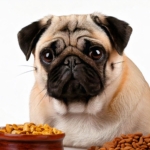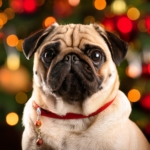Introduction: A Brief (and Slightly Hairy) Guide to Pug Care
Having a pug is sort of like having a snorting, waddling, treat-munching shadow trail along behind you. But with that face that’s so irresistibly smushed comes great responsibility. From bowls to furballs, here’s how to keep your pug in top pug-formance.
Nutrition: Fuel for the Snort Machine
Pugs live on balanced meals—stress on live, not inhale like a woolly vacuum cleaner. Watch portions or you’ll end up rolling your pug rather than taking them for a walk. Feed them based on their age, weight, and frequency with which they assure you that they’re “starving.”
Exercise: Just Enough to Keep the Waddle Graceful
Yes, your pug is going to need exercise, but do not enroll them in a marathon. Low-impact activity and short walks are their thing. Too much huffing and puffing and they will be wheezing like an old accordion in need of repair.
Grooming: Because That Shedding Isn’t Going to Stop Itself
Pugs are small fur sprinklers. Brush frequently unless you like to wear pug hair as an accessory. Don’t forget those face folds—those aren’t just cute, they’re also possible mold farms if not kept clean.
Health Monitoring: Vets Know Best
Regular vet visits are like tune-ups for your snortmobile. Keep those vaccinations up, and watch for signs your pug is pretending to be healthy just to avoid going to the vet. (Spoiler: they hate it.)
Environment: The Pug-Proof Palace
Set up your home like you’ve got a toddler who snores. No open staircases, dangling cords, or toxic houseplants. And remember: if your pug can reach it, they’ll probably try to eat it.
Understanding Pug Psychology: A Masterclass in Sass and Snuggles
Cuddly? Understatement of the Year
Pugs are attached. Forget about personal space—your lap, your bed, your face… wherever your heat and treats are, they’ll be there.
Playful But.Lazy
They’ll chase a ball twice and then give you that look as if you should go retrieve it. They like to have fun—just in a low-key, nap-in-between-zoomies type of manner.
Stubbornness: Standard Equipment
They’re intelligent. Too intelligent. Pug training is akin to bargaining with an snack-obsessed goblin. Be kind, have treats, and expect dramatic opposition.
Vocal Talents
Barking, snorting, sneezing—they’ve got a whole symphony of noises. Most of them loud, all of them sporadic.
Creating a Pug-Safe Home: Basically, Baby-Proofing with More Snoring
- Tiny Trouble Magnets: Keep everything chewable out of reach. Your remote? Game on.
- Cord Nibblers: Cable management is not optional if you have a taste for fried pug.
- Furniture Stability: Anchor everything if you don’t enjoy a pug-shaped hole in your bookshelf.
- Climate Control: Pugs heat up quicker than a laptop in July. Stay cool.
- No-Toxic Plants Allowed: Not all plants are gremlin-friendly.
- Baby Gates: Not only for babies—but also for pesky gremlins in dog costumes.
- Lock Chemicals Away: Unless your pug has learned to open cupboards (which, quite frankly, wouldn’t surprise us).

Pug Starter Pack: Must-Have Supplies
- Top-Tier Food: Your pug’s body is a temple. A very round, food-obsessed temple.
- Bowls that Don’t Tip: Because mess is their middle name.
- Harness over Collar: Shield that tiny windpipe from their own zoomie-induced excitement.
- Soft Bed: Extra points if it matches the couch they’ll actually sleep on.
- Grooming Arsenal: Prepare to shed-proof your life.
- Toys That Last Longer Than 3 Minutes: If it squeaks, it dies.
- Carrier: For travel or pug tantrums.
Feeding: The Art of Not Letting Your Pug Become a Meatball
- Measure their food. Don’t estimate it unless you want a bowling ball on legs.
- Go high-end—no mystery meat permissible.
- Two meals a day is optimal. Snacks? Yes—healthy ones.
- Fresh water at all times, even if they like to drink out of your glass.
- Be on a meal schedule. Digestion is improved and begging becomes marginally more predictable.
- Daily activity is required—even if it’s just running you to the fridge.
Exercise: Keep That Booty Wiggling
Indoor Fun:
- Puzzle toys: Genius moments, those.
- Tug-of-war: Easy on the tugs, please. This is a pug, not a lion.
- Fetch: More of a “toss-and-stare” affair, to be honest.
Outdoor Activities:
- Short walks. Think brisk walk, not mountain climb.
- Supervised playtime: Brief and sweet.
- Puppy playdates: With other relaxed, no-wrestling breeds, please.
Grooming 101: Fluff Management for the Furry Overlords
- Brushing: Weekly or drown in fur.
- Bathing: 4–6 weeks with mild shampoo unless they roll in something unknown.
- Nails: Clip them before you hear the “click-clack” of little tap shoes.
- Ears: Weekly cleaning unless you enjoy surprise vet costs.
- Wrinkle Patrol: Wipe daily unless you’re going for “wrinkle swamp” ambiance.
Vet Care: Because Snorts Aren’t a Diagnosis
- Biannual checkups. Yes, even when they “look fine.”
- Vaccinations: Stay up to date or risk pug judgment (and sickness).
- Teeth: Brush them. Or at least make an effort.
- Parasites: Fleas and worms are freeloaders. Boot them out.
- Weigh-ins: Keep them svelte-ish.
Training & Socialization: Jedi Mind Tricks, but With Treats
- Reward good behavior: Treats, compliments, or excited squealing.
- Short and sweet: Goldfish attention span, yeah?
- Social Butterfly Bootcamp: Introduce them to the world so they won’t go ballistic on squirrels.
- Basic Commands: Sit. Stay. Do not pilfer socks.
- Consistency: Be consistent with words or face confusion.
- Crate = Pug Cave: Not a punishment—it’s their relaxing spot.
Common Pug Ailments: What to Watch Out For
- Breathing problems: That adorable face of theirs isn’t exactly streamlined.
- Joint issues: Keep them mobile, but not parkour-mobile.
- Eye drama: They bug out at the slightest provocation—literally.
- Obesity: Just because they crave 12 snacks doesn’t mean they require them.
Pug Travel Guide: How Not to Lose Your Sanity
- Carrier: Cozy, safe, ventilated. Preferably not full of fur already.
- ID Tags: Because “Missing: Chubby Snort Gremlin” posters are awkward.
- Vet Visit: No surprise illnesses mid-trip, please.
- Hydration Station: Pack the bowl and water bottle.
- Pit Stops: For stretching, sniffing, and dramatic yawns.
- Pug-Friendly Hotels: Call ahead. Don’t assume your pug is charming to everyone.
Bonding: Making Your Pug Think You’re the Best Human Ever
- Quality Time: Walks, cuddles, Netflix (they don’t watch, but they judge).
- Reward and Repeat: Treats, cuddles, head scratches—daily.
- Training: Not only for discipline. It’s a ritual of bonding with snacks.
- Grooming: A massage with added fluff removal.
- Comfort: Keep routines the same and their bed fluffier than yours.
Conclusion: The Sacred Scroll of Pug Parenting
Want to deep dive into the world of pugs without drowning in fur?
Where to Lurk for Pug Wisdom:
- pugbeauty.com – For those looking for fashion and fur advice.
- Reddit’s r/pugs – For memes, advice, and raw pug chaos.
- AVMA & PetMD – The serious stuff. (Like, real vet stuff.)
- ASPCA & Humane Society – Training goldmines.
- “Pugs for Dummies” – Not an insult. Actually a great read.
- “Pug: The Complete Guide” – If you really want to go full pug professor.
Follow these not-so-serious yet totally useful tips, and you’ll be rewarded with a healthy, happy pug who thinks you’re the treat dispenser of the gods.




